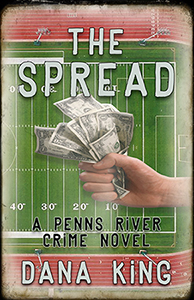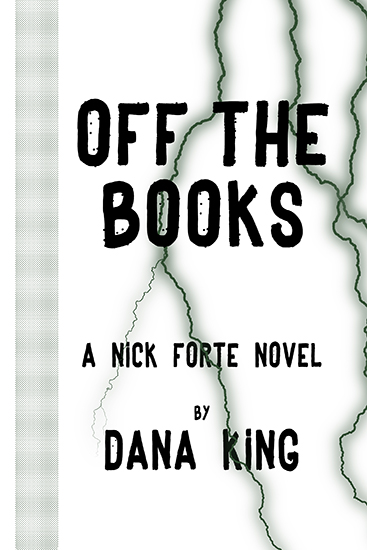J.L. Abramo was born and raised
in the seaside paradise of Brooklyn, New York on Raymond Chandler's fifty-ninth
birthday.
A long-time journalist, educator,
and theatre artist, Abramo earned a Bachelor of Arts degree in Sociology and
Education from The City College of New York and a Master of Arts Degree in
Social Psychology from The University of Cincinnati. At Cincinnati, Abramo led
the published research study Status
Threat and Group Dogmatism (Human
Relations, 31 (8): 745-752).
Abramo is the author of Catching Water in a Net, winner of the
St. Martin's Press/Private Eye Writers of America Award for Best First Private
Eye Novel; the subsequent Jake Diamond Novels Clutching at Straws, Counting
to Infinity and Circling the Runway
(Shamus Award Winner); Chasing Charlie
Chan, a prequel to the Jake Diamond series; Gravesend; Brooklyn Justice;
Coney Island Avenue (a follow-up to Gravesend); and the generational novel American History.
Homeland Insecurity is Abramo’s first book-length work of
non-fiction.
He and I first met at the Shamus
Award banquet in New Orleans, where we shared a table with the team from Down
& Out Books. That’s the year Joe won for Circling
the Runway, besting, among others, me. I was more than hapopy for him.
He’s a good guy, a fine writer, and the book is more than a deserving winner.
Let’s talk about Homeland Insecurity.
One Bite at a Time: Homeland
Insecurity is quite a departure for you. What made you dip your toes into
the non-fiction realm?
J.L. Abramo: I had done a good
amount of journalistic writing before trying my hand at fiction—and that experience has
always influenced my novels.
In the Jake Diamond mystery series,
there have always been references to events of the times—as well as mention of
period music, movies, and the like.
In Chasing Charlie Chan, a
novel taking place primarily in 1994,
and flashing back to 1940s Hollywood and Las Vegas, there are a good number
of historical events and real-life characters—the O.J. Simpson murder trial,
Major League Baseball strike, the Charlie Chan films and the fate of Benjamin “Bugsy”
Siegel to cite several examples.
In my novel American History, as
the title may suggest, more than ninety years of historical events are woven
into the fictional generational tale of two feuding Italian-American families.
So, tackling strict nonfiction
was not a tremendous leap—and
was something I had probably been drifting toward for some time.
OBAAT: There were hundreds of
murders in this country during the time frame from which you picked those you
chose to write about. What made them special?
JLA: I first came across the
Edgar Smith/Victoria Zielinski case when I found Smith’s book, Brief Against
Death, at a yard sale. I had read other books that were written from within
prison walls, and had always found them compelling. Smith had been on death row
for more than 11 years when the book was published and he had managed to
recruit an influential supporter, William F. Buckley Jr., as Jack Henry Abbott
had done with Norman Mailer.
In 2003, Gerald Mason was
arrested less than a mile from where I lived in South Carolina—accused of
murdering two young police officers in California more than 45 years earlier.
Smith and Mason were born eight
days apart in 1934, and both crimes took place in 1957. These coincidences were what started me
thinking about taking the cases together if I eventually decided to go ahead
with a project.
OBAAT: You intercut actual events
that occurred on the day things you focused on happened, or that took place in
the intervening time since you last described your primary story. It’s highly
effective for giving the reader a sense of the world at that time. What gave
you the idea to do that, and how much research was involved?
JLA: These crimes took place when
I was ten years old. To attempt gaining insights, I tried to look at these
events in relation to the changes America was going through following World War
II and throughout the fifties and sixties—the Red Scare; the new icons in
music, film, and literature; the proliferation of crimes against children; serial
killings; and the decrease of confidence in political leaders. I began seeing it as a
story of how the murders may have affected the times and how the times may have
perhaps instigated the crimes. That led to my decision to present these cases
as I did—within the context of the time periods—relying
on a considerable amount of research as well as on my own personal memories of
growing up in those decades.
OBAAT: Court transcripts and
police interviews figure prominently in the book. Court transcripts are a
matter of public record, but how were you able to dig up police interviews from
65 years ago?
JLA: There was coincidence here as well. Guy Calissi was the Bergen County prosecutor in the Smith murder trial. Calissi was born in the same year as my father in 1909. He died the year my father died, in 1980. By the time I first came across the case, and ultimately decided to explore it, Calissi was gone.
However, he did have a son—born
the same year I was born—and he was an invaluable help. Ronald E. Calissi had
written a book about his father’s famous case—published
in 1972—not long
after Edgar Smith’s release from prison. He was able to supply me with the transcripts
of police interviews from 1957, a transcript of the ‘infamous’ Q&A
Assistant Prosecutor Fred Galda conducted with Smith, and full trial
transcripts. The younger Calissi passed away in 2016.
OBAAT: You obviously had a
well-formed idea when you started on the book. Did your research change your
thoughts about anything, or solidify them?
JLA: After reading Brief
Against Death I began, as Bill Buckley obviously had, considering Edgar
Smith’s innocence. When I finally located Smith’s follow-up book, Getting
Out, I was fascinated by how the legal system worked in this—and in many
cases. For nearly fifteen years, Smith professed his innocence and remained on
death row in Trenton, New Jersey. When he ultimately plead guilty to a lesser
offense, Smith was immediately released.
As I continued to investigate, my thoughts and opinions about Smith
changed considerably.
In the case of Gerald Mason, I
was aware of the outcome before researching the background of the 1957 crimes—but
my exploration changed my thoughts and opinions about the power of persistence
in criminal investigation.
OBAAT: Did you discover anything
in your research that surprised you beyond the routine surprises one expects
when doing research, whether the surprise was pleasant or unpleasant?
JLA: There were great surprises but,
to avoid what would be terrible spoilers, I will have to leave them to the
readers of Homeland Insecurity to discover.
* * *
And we’ll leave you with this perfect setup to buy the book
and see what it is Joe has been talking about. It’s a fascinating read.
Thanks to J.L. Abramo for taking the time to chat with OBAAT
today. Best of luck with the book, Joe.
For more about Joe, please visit:




No comments:
Post a Comment